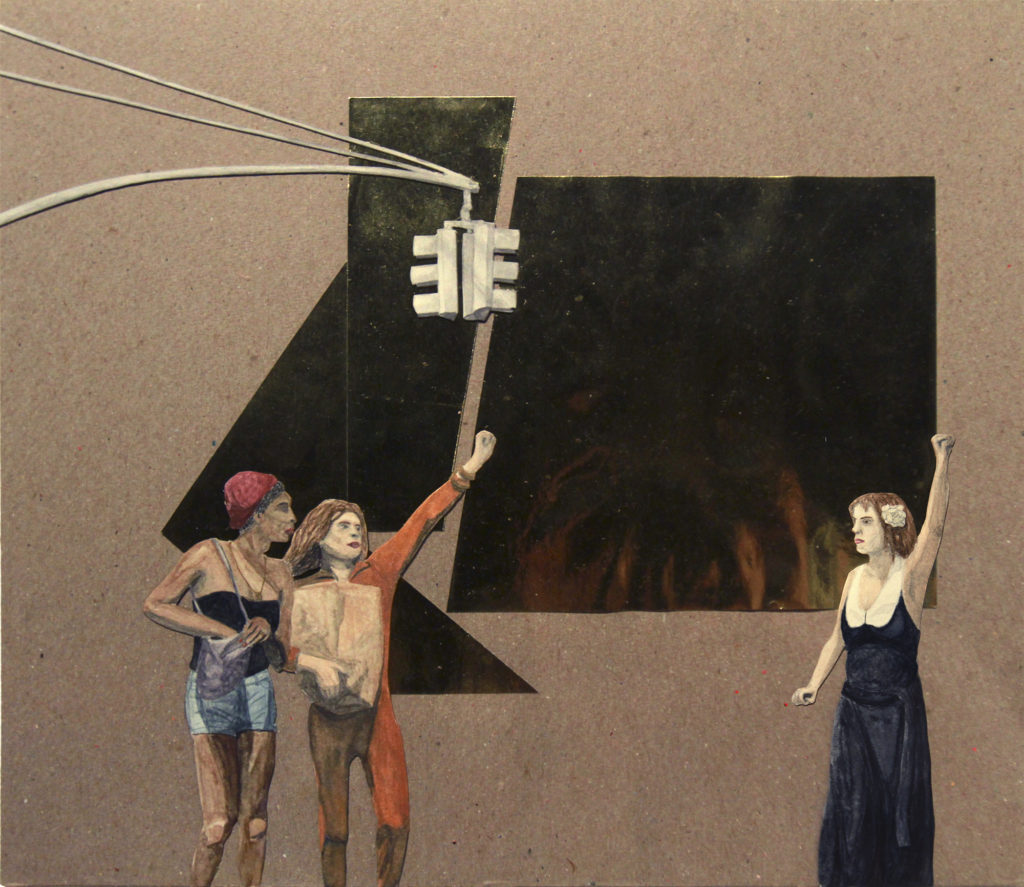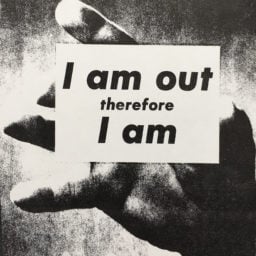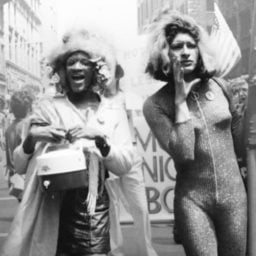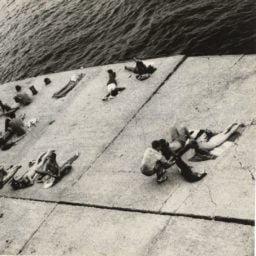Fifty years ago this month, riots over a police raid at the Stonewall Inn in Greenwich Village jump-started one of the most important movements of the 20th century—the fight for LGBTQ equality. The impact that this movement has had on the fabric of American culture is well documented. But its influence on generations of art makers has been, on an institutional level, vastly overlooked.
Hopefully, that’s about to change. This summer, dozens of museums and cultural centers throughout New York are staging exhibitions looking back on the art made about, during, or because of the gay liberation movement. From overdue retrospectives to historical surveys to intimate photo exhibitions, here’s our list of the most notable shows to you won’t want to miss.
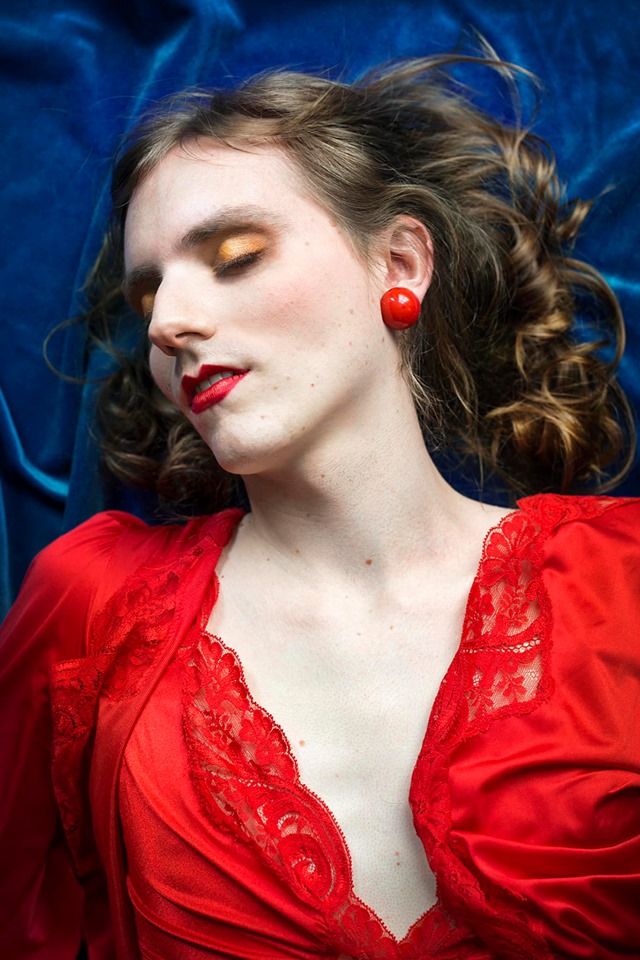
Portrait by Lissa Rivera, from the series “Beautiful Boy Chapter I.” Courtesy of the artist.
Bringing together the work of 23 contemporary image makers, including Barbara Nitke, Lissa Rivera, and Pacifico Silano, “Photography after Stonewall” looks at themes that would have been unthinkable 50 years ago: bondage, cross-dressing, pornography. But many of the photos on display are radical in a different—and more subtle—sense: they simply depict people, many of whom are marginalized by mainstream society, in an intimate and sensitive way.
Soho Photo Gallery, 15 White Street, through June 29, 2019.
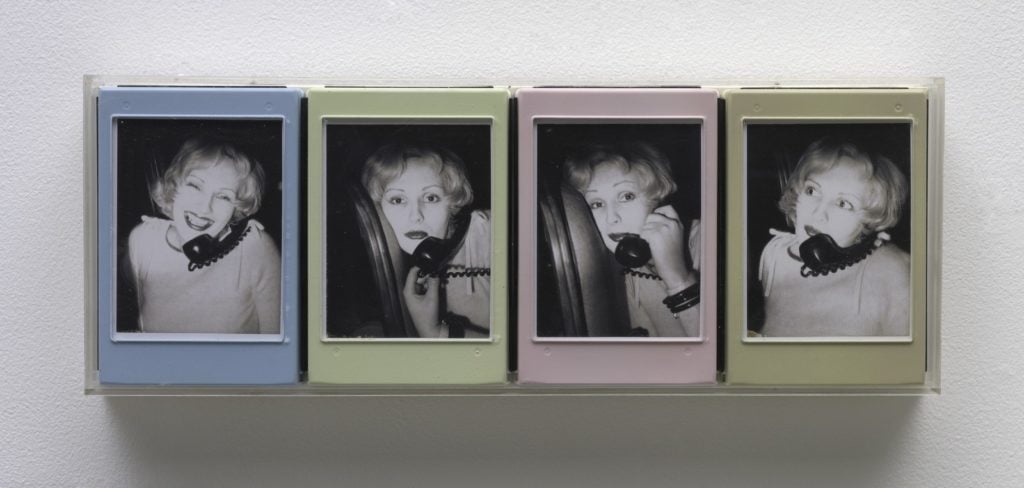
Robert Mapplethorpe, Candy Darling (1973). Solomon R. Guggenheim Museum, New York. Photo: © Robert Mapplethorpe Foundation.
In 1993, a gift of hundreds of photographs from the Robert Mapplethorpe Foundation initiated the Guggenheim’s photography collection. Now, 26 years later, those works populate “Implicit Tensions,” a two-part show that takes viewers through the late photographer’s career, from his early Polaroids and mixed-media collages, to his controversial S&M-inspired images of the mid-1980s, to his many elegant portraits of friends, celebrities, and himself.
The Guggenheim Museum, 1071 5th Avenue, Part 1 through July 10, 2019; Part 2, July 24, 2019–January 5, 2020.
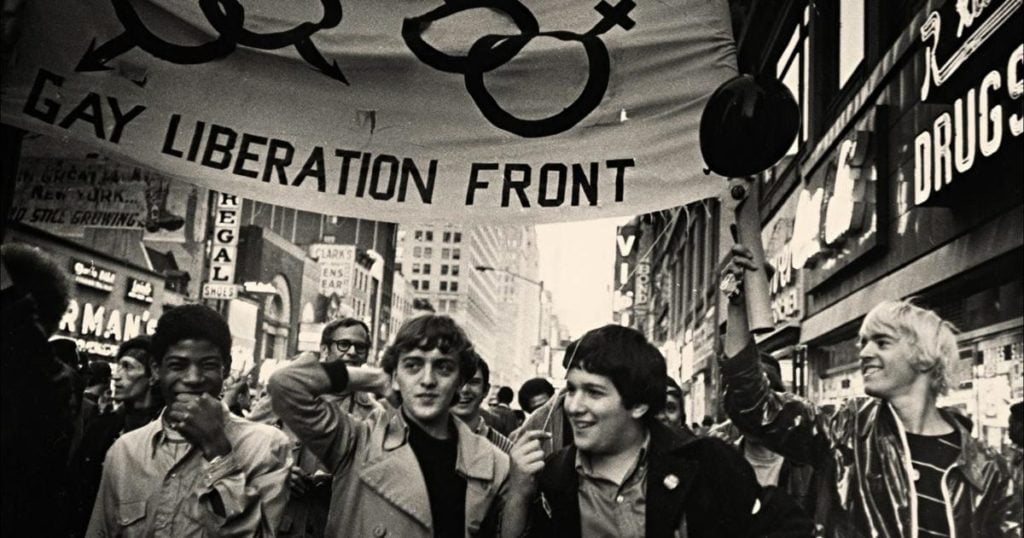
The Gay Liberation Front marches on Times Square, New York City, 1969. Photo by Diana Davies. Manuscripts and Archives Division.
The imagery that likely springs to mind when one thinks about the LGBTQ civil rights movement—marchers hoisting defiant banners, Pride paraders surging down the city streets in gleeful clusters—is largely the work of Kay Tobin Lahusen and Diana Davies, two photographers and activists who were instrumental in documenting the movement for mainstream media. “Love & Resistance” culls together the work of these two trailblazing photojournalists, along with historical artifacts and ephemera from the era.
The New York Public Library, 476 Fifth Avenue, in the Rayner Special Collections Wing & Print Gallery, through July 13, 2019
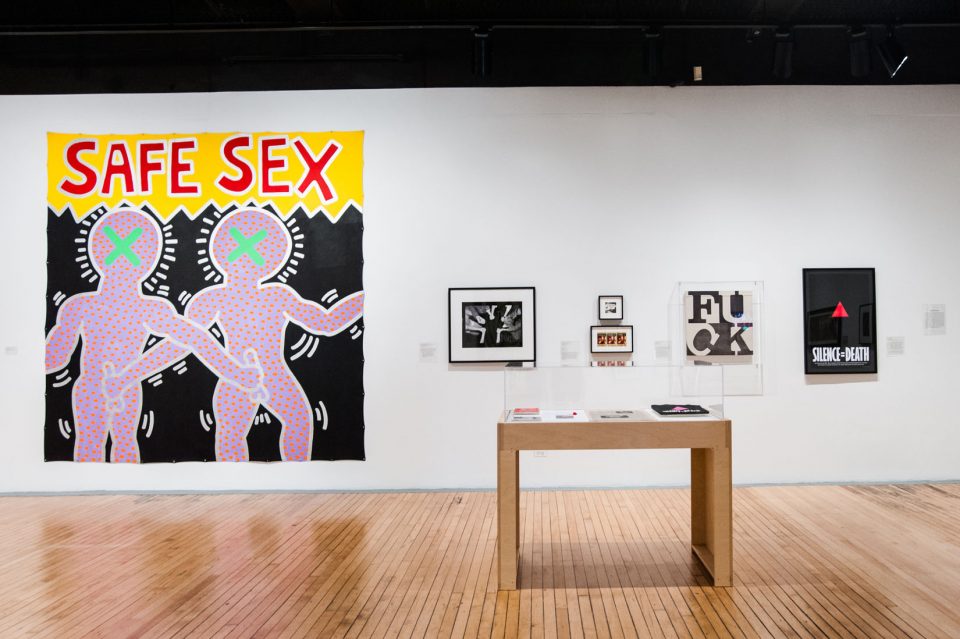
Installation view of “Art After Stonewall.” Photo: Nick Papananias. Courtesy of NYU Grey Art Gallery.
Curated by Jonathan Weinberg, with Tyler Cann, and Drew Sawyer, this critically-lauded two-part show looks at the impact Stonewall had on the evolution of art in the 1970s and ’80s, from many of the names you’d expect—artists like Keith Haring, Robert Mapplethorpe, and David Wojnarowicz—to others that you likely haven’t heard of, but should.
The Grey Art Gallery, New York University, 100 Washington Square East; the Leslie Lohman Museum, 26 Wooster Street, through July 20, 2019.
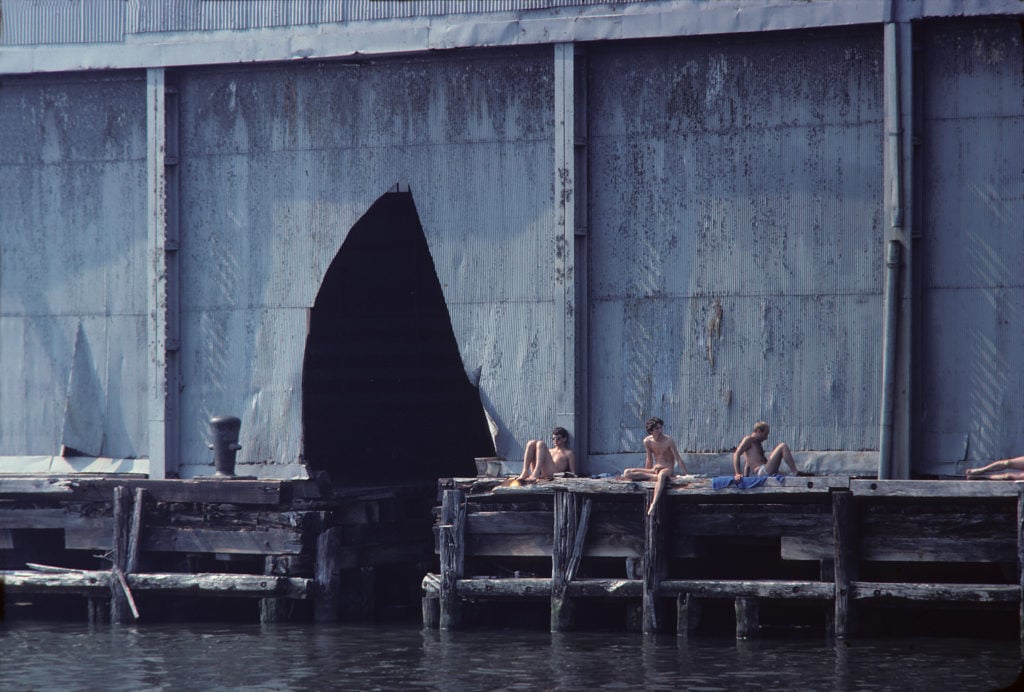
Shelley Seccombe, Sunbathing on the Edge, Pier 52 (1977). Courtesy of the artist.
This exhibition focuses on the underground LGBTQ communities that have been toiling, mostly under the radar and now largely forgotten, for the past 150 years. The waterfront in Brooklyn, where “industrial jobs, cheap housing, and urban anonymity life provided unique opportunities for queer people to explore their own desires and discover one another,” as it says in the website’s description, have been preserved through photographs, ephemera, and other artifacts.
The Brooklyn Historical Society’s Pierrepont gallery, 128 Pierrepont Street in Brooklyn, through August 4, 2019.
“Stonewall 50” at the New York Historical Society
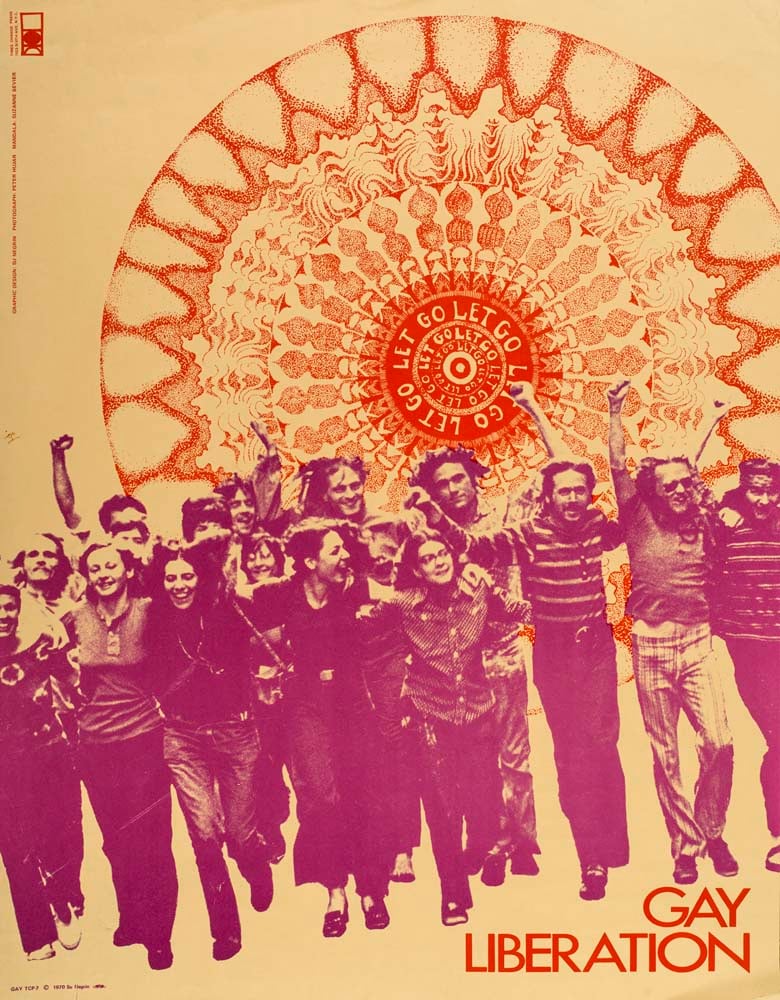
Su Negrin: graphic designer, Suzanne Bevier: artist, Peter Hujar: photographer, Gay Liberation, New York: Times Change Press, 1970. Graphics Collection, The Lesbian Herstory Archives.
At the New York Historical Society, three exhibitions—”Letting Loose and Fighting Back: LGBTQ Nightlife Before and After Stonewall,” “By the Force of Our Presence: Highlights from the Lesbian Herstory Archives,” and “Say It Loud, Out and Proud: Fifty Years of Pride”—provide a comprehensive look at the historical changes happening within LGBTQ communities in the aftermath of Stonewall and the gay rights movement.
The New York Historical Society, 170 Central Park West, through September 22, 2019.

Collier Schorr’s Agosto Machado. Photo © Collier Schorr, courtesy of Alice Austen House.
Photographer Collier Schorr has spent the last three decades documenting the subcultures and “tribal” connections between groups of people, with a particular focus on gender roles and sexuality. A collaboration with the Stonewall Forever project at Staten Island’s Alice Austen House—a national site of LGBTQ history—unveils 15 portraits of activists and artists who are a part of the community to celebrate the 50th anniversary of the Stonewall uprising and how it has shaped the culture.
The Alice Austen House, 2 Hylan Boulevard, Staten Island, through September 30, 2019.
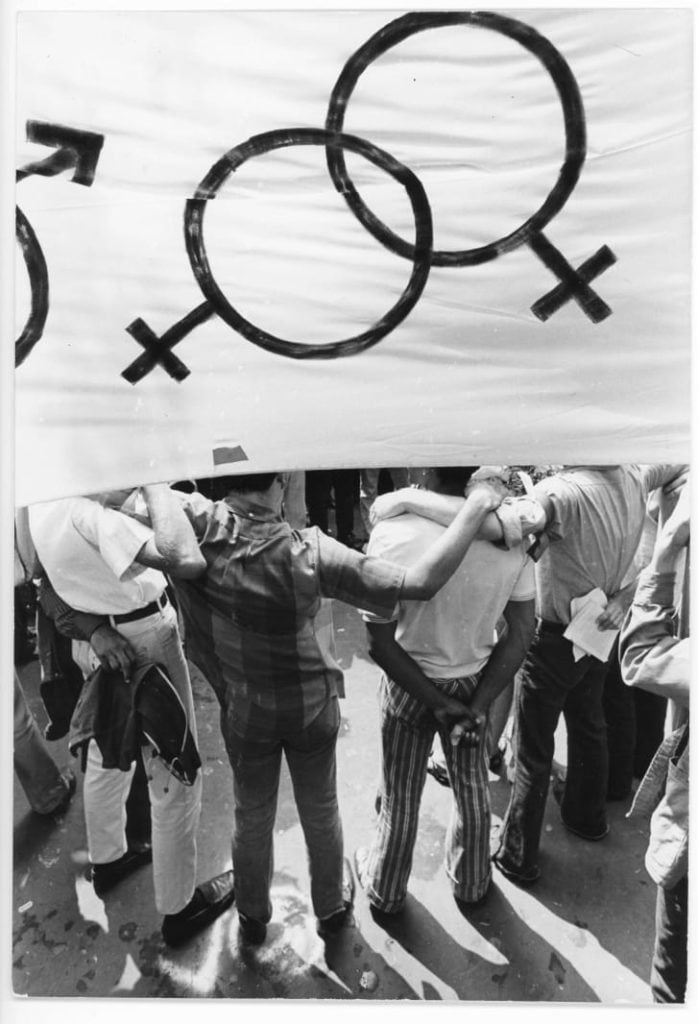
Fred W. McDarrah, “First Gay Pride March,” July 27, 1969. Courtesy Fred W. McDarrah Archive/MUUS Asset Management Co LLC.
A staff photographer for the Village Voice through the 1950s, ‘60s, and ‘70s, Fred W. McDarrah’s was instrumental in telling the story of the up-and-down evolution of New York during that time. This pair of exhibitions at the Museum of the City of New York brings together McDarrah’s stark, black-and-white depictions of the Stonewall riots and the fierce fight for equality that played out on the city streets thereafter.
The Museum of the City of New York, 1220 5th Avenue; “Voice of the Village,” through December 1, 2019; “PRIDE,” through December 31, 2019.
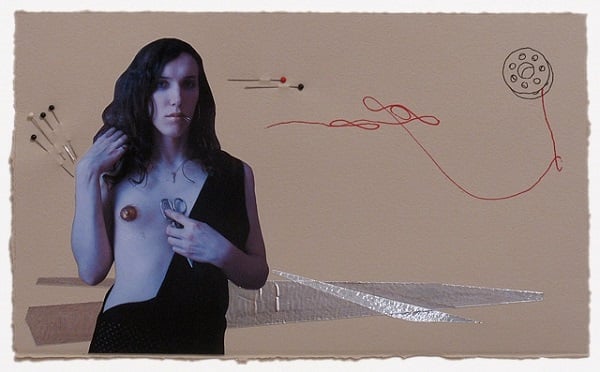
Tuesday Smillie, Untitled (2008). Image: Courtesy of the artist.
The title of the Brooklyn Museum’s exhibition, “Nobody Promised You Tomorrow,” is widely believed to have been spoken by the so-called “mayor of Christopher Street,” the late Marsha P. Johnson—a transgender activist who, legend has it, was one of the first to throw glasses and debris at police who raided the Stonewall Inn. This survey of artists, all born after the 1969 riots, explores the impact Stonewall had on a successive generation, and the ways in which its spirit still lives on.
The Brooklyn Museum is located at 200 Eastern Parkway, Brooklyn, through December 2, 2019.
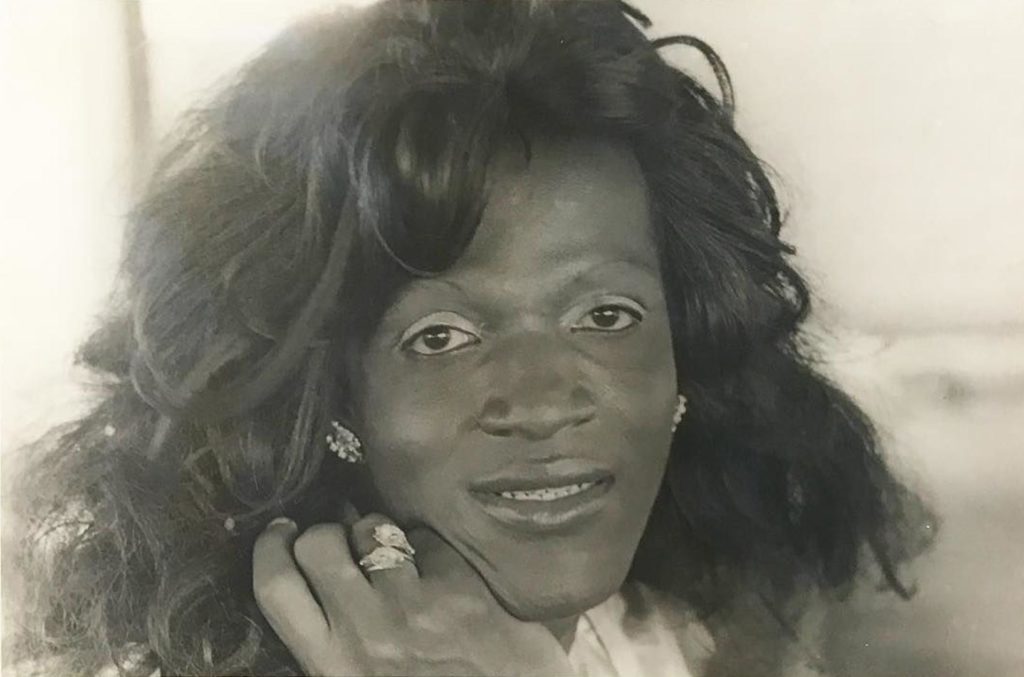
Alvin Baltrop, Untitled (Portrait of Marsha P. Johnson), n.d. Courtesy of the Bronx Museum.
In the 1970s and early ’80s, after Stonewall and before the AIDS crisis, New York’s west-side piers were an eden for cruisers, drug users, sexual experimenters, and gay men simply looking for community. Alvin Baltrop, a Bronx-born photographer whose work largely went unrecognized during his life, spent 11 years obsessively documenting this scene in all its lascivious, liberated glory. Later this summer, the Bronx Museum of the Arts will pay tribute to the late artist with the first-ever institutional survey of his work.
The Bronx Museum, 1040 Grand Concourse, Bronx, August 7, 2019–February 9, 2020.
